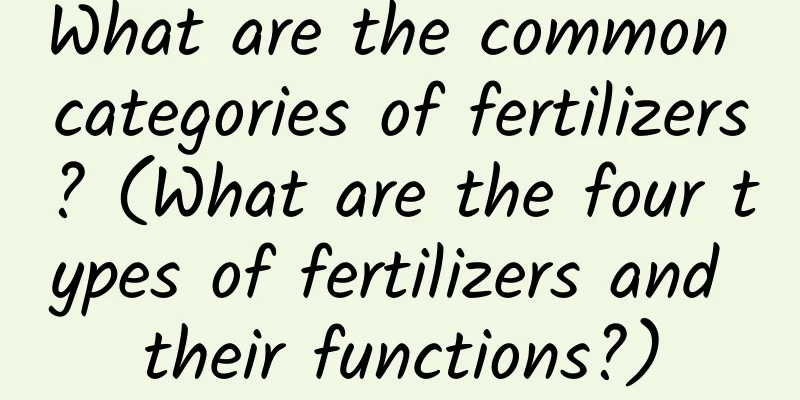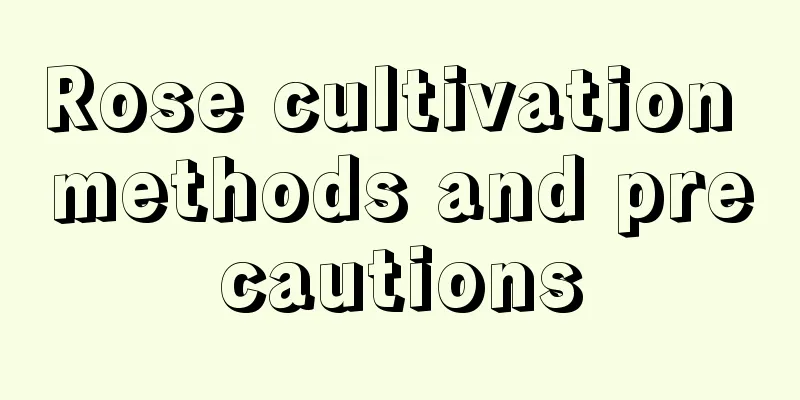What are the common categories of fertilizers? (What are the four types of fertilizers and their functions?)

|
In application and production, fertilizers are mainly divided into macro-element fertilizers, medium-element fertilizers, trace element fertilizers, compound fertilizers, organic fertilizers, etc. Macronutrients mainly include nitrogen, phosphorus and potassium. Nitrogen is one of the nutrients that plants need the most and has the highest mass fraction. Nitrogen is a component of proteins, nucleic acids, chlorophyll, many enzymes in plants, vitamins needed by plants, and some plant hormones. According to the form of nitrogen in chemical nitrogen fertilizers, nitrogen fertilizers can be divided into four types: 1. Ammonium nitrogen fertilizer 2. Nitrate nitrogen fertilizer 3. Amide nitrogen fertilizer 4. Long-acting nitrogen fertilizer. Compared with nitrogen, phosphorus is one of the indispensable nutrients for plant growth and development. Phosphorus is a component of important organic compounds in plants. It can promote the formation of protein, the synthesis of carbohydrates, the metabolism of fat, and improve the stress resistance of crops. Phosphate fertilizers can be divided into three categories: 1. Water-soluble phosphate fertilizers 2. Weakly acid-soluble phosphate fertilizers 3. Insoluble phosphate fertilizers. Potassium fertilizer has a great impact on the yield and quality of crops. Potassium is an activator of many enzymes in plants, can promote photosynthesis, increase the assimilation rate of carbon dioxide, promote the synthesis and operation of carbohydrates, promote the synthesis of proteins and nucleoproteins, and enhance the stress resistance of plants. Commonly used potash fertilizers include potassium chloride, sulfate-type potash fertilizers, and a small amount of potassium carbonate. Secondary elements refer to sulfur, calcium and magnesium. Higher plants require 16 essential nutrients for their growth and development. In addition to 9 major and medium elements such as C, H, O, N, P, K, Ca, Mg, and S, they also need to absorb small amounts of trace elements such as B, Mn, Cu, Zn, Mo, Cl, and Fe. Plants require small amounts of trace elements, and the critical range between deficiency and excess of various trace elements is very narrow. Even a slight deficiency or excess can cause serious harm to crops. Trace elements are mostly components of enzymes, vitamins, growth stimulants, etc., directly participate in the metabolic process of organisms, and their physiological effects are highly specific. Compound fertilizer refers to chemical fertilizer that contains two or more of the three main nutrient elements of nitrogen, phosphorus and potassium. Organic fertilizers mainly refer to fertilizers with organic matter as the main component . Organic fertilizers mainly come from rural and urban waste, including plant residues in the planting industry, livestock and poultry manure and urine in the breeding industry, as well as human manure and urine and domestic garbage. The role of organic fertilizer in agricultural production: 1. Provide nutrients to crops. 2. Improve the physical and chemical properties of soil. 3. Reduce environmental pollution. 4. Improve the quality of crop products. 5. Improve the nutrient effectiveness of insoluble phosphate and trace elements. 6. Alleviate the contradiction of energy and resource tension. |
<<: How to make Chinese cabbage grow core quickly (how to make small cabbage grow core quickly)
>>: How to prepare soil for potted plants (how to prepare the best soil for potted flowers)
Recommend
How to cultivate Paeonia lactiflora
1. Soil: Grass peony is a deep-rooted plant with ...
Can broad bean husks be used as fertilizer?
Broad bean skins as fertilizer Broad bean skins c...
What are the cultivation methods and precautions of Golden Heart Chlorophytum
How to grow golden heart spider plant Golden Hear...
How often should I water the flowers?
How often should I water the flowers? Anthurium g...
When is the best time to plant chive seeds?
As a common vegetable, leek is not only loved by ...
Can the double-line arrowroot be hydroponically cultivated?
Can the double-line arrowroot be hydroponically c...
How to prune avocado potted plants
Special pruning of avocado Avocados do not need t...
How to water potted Osmanthus fragrans
How to water Osmanthus fragrans is a tropical and...
Can Lover's Tears be hydroponically cultivated? How to root them hydroponically?
Can Lover's Tears be hydroponically cultivate...
The meaning of peacock arrowroot
1. Its meaning There are two main theories about ...
Bitter melon planting method and time
As a common vegetable , bitter melon not only has...
The division propagation method of Alpinia glabra
Preliminary preparations for propagation of Alpin...
Cultivation methods and precautions of lotus
Nymphaeaceae is a perennial floating-leaf herb of...
Where are the best places to grow yellow pear?
Pear Planting Conditions Round yellow pear has go...
The best time to take hibiscus cuttings
1. Best time for cuttings The best time for hibis...









